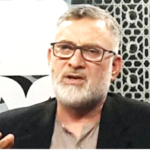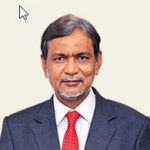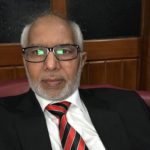“Your diamonds are not in far distant mountains or in yonder seas; they are in your own backyard, if you but dig for them.” (Russell H. Conwell in his “Acres of Diamonds”)

Among the major evils that plague our country, power sector’s circular-debt clearly stands out. It has crossed PKR 2.54 trillion already and is defying every effort of the government to tame it. To save this sector from financial ruin, the government must explore every option that can provide a sigh of relief to the country’s economy and people as both are suffocating under the endless streak of tariff hikes.
According to NEPRA’s State of Industry Report 2023, poor governance of the power sector is leading to huge financial losses which exceeded PKR 530 billion last year. The main causes behind these (almost 75%) were excessive losses in the systems controlled by DISCOs and lack of full revenue recovery by them. Out of merit-order generation due to system constraints and penalties paid to IPPs for some contractual violations made up the rest.
NEPRA, in the Foreword of its above report, sums up this sector’s performance in these words:
“The power sector grappled with persistent issues, ranging from increasing capacity payments to over-reliance on imported fuel, under-utilization of power plants, circular debt, transmission constraints, operational inefficiencies, underutilization of HVDC line etc. However, the primary driver of the power sector’s stress is poor governance, spanning from planning to execution and subsequent operation, coupled with lack of accountability.”
“While closely looking at the individual factors which contributed for high electricity cost, it becomes evident that most of them are controllable. For instance, the cost of fuel can be managed by diversifying the generation mix towards renewable energy sources. Similarly, the impact of increased capacity payments can be mitigated by boosting electricity sales. Issues like circular debt and others can be addressed through timely reforms, better planning and improved governance.”
No business can even think of surviving with such humungous losses, let alone remaining profitable. Our inability to address the above issues head-on and reluctance to carry out systemic overhaul of this sector have not only contributed to these evils but have allowed them to gain a firm foothold. Quick-fixes, band-aids, and ad hoc actions such as early closing of markets, media campaigns to motivate conserving electricity, and raising tariffs frequently to bridge the gap between costs and revenues have failed to cure the cancer that inflicts this sector.
Notwithstanding that these are no substitute for the “improved governance” that NEPRA may have in mind, this article suggests a difficult but workable solution to pull the power sector out of its present mess. It’s the development of pumped hydroelectric storage (PHES) and compressed-air energy storage (CAES) schemes in the country, especially in its southern parts. As we discuss later, these facilities will alleviate the serious issues of spiraling up capacity payments and the penalties being paid to IPPs. Both will also contribute substantially to cover the uncertainty and variability of
the high shares of renewable generation the government plans to add in the power grid by 2030. But Let’s first have a quick look at the philosophy that governs the power supply business to appreciate
how the suggested development will help.
Most of the cost in the power grid is due to consumer demand that varies randomly. Everyday, it rises from a minimum to a crest and then falls back. The value of the minimum demand, maximum demand, and the way it rises and falls can vary from day to day, season to season, and system to
system, but the pattern remains largely similar. The demand is often classified into three categories: base load that remains on the system round the clock, peak load that comes on for few hours in the year only, and intermediate load that falls in between.
Electricity has some unique constraints. A critical one is that it must be produced and delivered the moment it’s demanded as its storage has been both difficult and expensive. Recent developments in battery storage technologies are beginning to ease this constraint a bit, but we aren’t there yet.
A variety of technologies have evolved to enable utilities to serve consumer demand reliably and at minimum cost. We have high upfront but low fuel cost plants like coal and nuclear used primarily to serve base load. On the other extreme, we have low upfront but high fuel cost plants like oil and gas
combustion turbines and diesel generators to serve the peak load. There’re also a host of other technologies in between to serve intermediate loads.
Cost is not the only consideration in picking up a generator portfolio as many other factors also influence this decision. These include a technology’s service, its operational flexibility, its construction time and lifespan, its dependability, its environmental footprint, its support to industrial
development and jobs creation, and its contribution to self-reliance, to name but just a few.
For much of its history, power grids have had generators operate in synchronism with each other. at a nominal frequency (50 Hertz in Pakistan) that is maintained across the system. Different grid sections however are allowed to operate at different voltages to suit the end-use application. In addition to capacity and energy, generators are also required to provide additional services to maintain stability and security of the grid in normal and contingency situations—collectively termed support or ancillary services.
Renewable plants are non-synchronous and connect with the grid via electronic interfaces. Their capacity and production both depend on the availability and variability of the primary resource on the plant site. Without storage, they can’t provide capacity, energy, and the ancillary services like those by conventional generators. On-site storage can help but adds substantially to their costs, often doubling it. Other techniques can also serve this purpose, but not to the extent of the storage.
Three critical issues that planners face in developing optimal capacity expansion plans with high shares of renewables are: (a) how much firm capacity a candidate renewable plant will contribute to system reliability? (b) how much energy it will provide? and will it provide any of the ancillary
services? These issues do not go away even if planners work out an optimal generation portfolio; they just shift shoulders—from those of planners to those of system operators (SO).
The philosophy that governs the electric supply and delivery business remains largely the same whether the whole system is managed by a single entity or when some functions are outsourced (like “generation” to IPPs). But the utility now must agree on the terms and conditions in a formal
contract with these producers. As huge risks exist upstream and downstream of them, sponsors of IPPs seek firm guarantees to protect their investment (via the much-cursed “take-or-pay” contracts).
The breakthrough in efficiency and cost of battery packs for electric vehicles (EVs), particularly those based on lithium-ion chemistries, spurred R&D in utility-scale storage technologies as well and led to a similar price decline (90% in the last decade by some reports). Battery-packs are superior to other storage technologies for short-term grid support. But for larger and longer-duration requirements,they lose their edge. There are serious issues also about their uninterrupted and economic supplies in the future because the mineral and material resources used in their production are unevenly
distributed in the world. These constraints and the many other superior features of the bulk energy storage schemes, like PHES and CAES, make them a more viable option for our country than the battery storage schemes.
Globally, the power grid operations are governed by a standard set of rules in a “scheduling and dispatch” process which includes: (a) arranging generators in an ascending order of operating costs called “merit order”; (b) selecting a subset from the merit order list the plants to be operated next
day or week called “unit commitment”; (c) scheduling their loading order and production levels; (d)their actual dispatch; and (e) monitoring system operation continuously and intervene, if necessary,to maintain supply-demand balance.
Economic considerations are paramount, but some other factors also influence the SO’s scheduling and dispatch process. For instance: (a) having adequate firm capacity from various sources to maintain system reliability; (b) their ability to cater to momentary fluctuation in demand (called
“regulation”); (c) their ramping up/down capability to follow demand as it rises and falls (called “load-following”); (d) their assistance in handling contingencies (called “operating reserve”); and (e) their capability for restoring the system from blackouts (called “Black Start”).
Bulk energy storage, large (above 50 MW) and long-duration (from weeks to months,) is an example of Conwell’s diamonds in our own backyard awaiting discovery. Two such options, pumped hydroelectric storage (PHES); and compressed-air energy storage (CAES), can help the country not
only in managing the runaway circular-debt but also in covering any adverse impacts of the high shares of renewable power the government plans to add in the power grid by 2030.
Pumped Hydroelectric Storage (PHES): PHES uses earth’s gravity to generate electricity just like a regular hydroelectric plant. They use two separate water reservoirs, one located at a higher elevation from the other. Water is pumped from the lower reservoir to the higher for storage when cheaper and is kept there. When required, it’s allowed to flow back to the lower reservoir to produce electricity. PHES schemes have been around for almost a century and constitute over 97% of the global energy storage. Their round-trip-efficiency is between 75 and 85%. Their storage capacity can
be large (above MW) as well as for longer durations (weeks to months and even longer).
Compressed Air Energy Storage (CAES): In CAES schemes, air is pumped into an underground cavern, mostly a salt cavern or an emptied oil or gas field using electricity when it’s convenient and cheaper. When energy is needed, the air from the cavern or field is released back into the facility, where its expansion turns a generator. The CAES are also large and long-duration energy storage schemes. Their round-trip efficiency is generally between 40 and 60% but can approach 70%.
The charm of battery storage technologies is hard to resist, but a slightly deeper probe will easily reveal that for the time scales and issues we face, bulk energy storage schemes like PHES and CAES will serve Pakistan’s needs much better. Both are mature technologies, use renewable resources, and except their development costs, will rely on local resources for operation. Both also offer multiple features that can be used to serve any unpredictable portion of demand on the grid.
The beauty of PHES and CAES schemes is that they can act as a generator or a load as the grid needs. These storage schemes can cost-effectively and efficiently provide capacity and energy to the system like any other source of supply when needed (in “discharging” mode) and can also increase or
decrease their demand like any other large load (in “charging” mode). These features, coupled with some others, can enable system operators keep a next-to-perfect balance in the grid, and thus can obviate the huge penalties being paid to IPPs at present.
- Some of the important services PHES and CAES can provide include:
- Energy Time Shift (buying electricity when cheap and selling it when expensive). Peak Shaving/Clipping (obviating the needs of expensive peaking capacity
- Cover renewable generation plants’ uncertainty and variability (capacity and output
- variations using stored energy to mitigate changes in their availability and production)
- Defer or eliminate capital investment needs in T&D upgrade and new facilities
- Operating Reserve (providing support to the system when it suffers an abnormal conditions)
- Black Start Capability (using stored energy to restore the system from blackout, independent
- of the grid supply) and
- Seasonal Storage (storing energy for several months)
Bulk energy storage schemes will provide multiple service to the grid (called “value-stacking” in utility lingo). This can increase storage utilization and improve its economics. These features can help not only in obviating the different types of penalties currently being paid to IPPs but also in covering the uncertainties and variabilities of renewable generation plants, and in reducing the wide gaps that exist between the consumer demand in different seasons of the year. In fact, they will facilitate our country in making a smooth and tear-free transition to a sustainable energy future.
Though their potential to resolve many of the present problems in the power sector are high, these schemes are not a panacea for every issue. A lot of groundwork will be necessary to study the prospects of PHES and CAES options in the country and their feasibility. We also don’t have the
expertise and tools required to do that. Existing policy, regulatory, investment, financing, and remuneration frameworks, as well as technical codes and procedures may require modification.
Unfortunately, bulk energy storage is an option little explored in our country. NEPRA Act and the National Electricity Policy are completely silent about it. ARE Policy 2019 only lists it as one of the alternative energy technologies. The National Electricity Plan 2023-27 also makes just a passing
reference to Hydrogen production and local manufacturing of storage batteries. Much more is needed in terms of policy support, legal coverage, regulatory controls, and pricing frameworks to stimulate and encourage development of viable energy storage schemes in the country.
Pakistan’s Balochistan province has a rich potential for developing such schemes. Their development,either as stand-alone or as hybrid with renewables at the same site and linked with other similar nearby plants in this province (present and future) and in the wind corridor of Sindh, will be an ideal combination to have. If subsequently linked with the national grid these will be a source of sustainable energy supplies not just for us but for our next generations also.
A lot of background material on the above aspects is available from prominent global organizations. Ministry of Energy (Power Division), AEDB, and NEPRA should join hands to commission a scoping or pre-feasibility study to further explore the potential and prospects of PHES and CAES schemes in the country. Pakistan may seek technical help and support from our time-tested friend, China, on these schemes as it tops the world in the deployment of PHES schemes adding up to 45.8 GW in 2022 (30% of the world total) and is poised to raise it to 62 GW by 2025.
The IPPs and the agreements signed with them is a reality and no amount of whining will reverse the past decisions. Renewable power generation, whether utility-scale or distributed, is also a new market force that is poised to grow. We must accept our present realities, learn from our past mistakes, and look forward with optimism for a bright future. Pakistan may be short in money but it’s rich in resources, particularly its talented people. Pakistan’s power sector problems are indeed grave but are not beyond the human imagination and capability. One solution is suggested above and there may be many more, as Conwell advises, in our own backyards only if we carefully search for them.






















